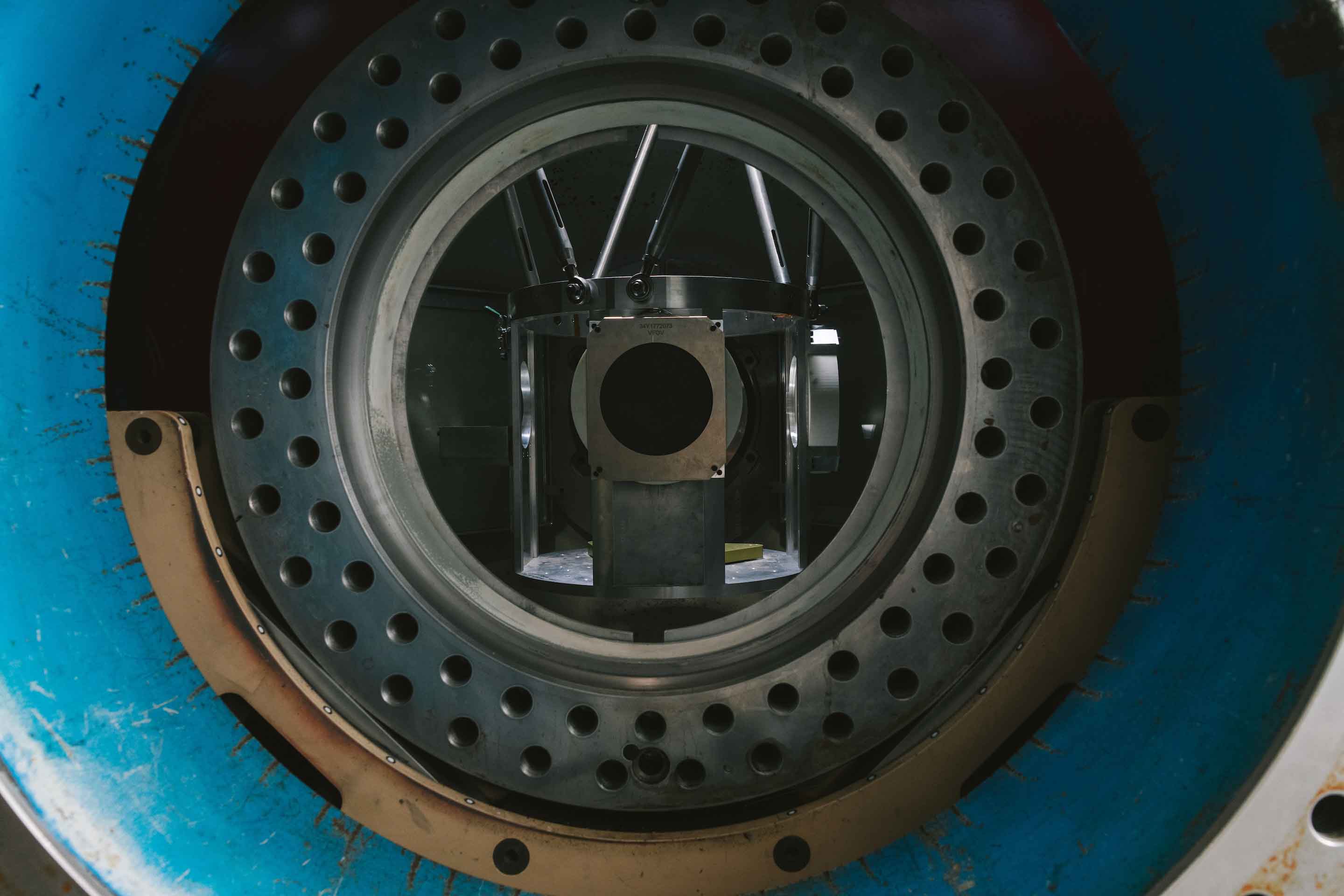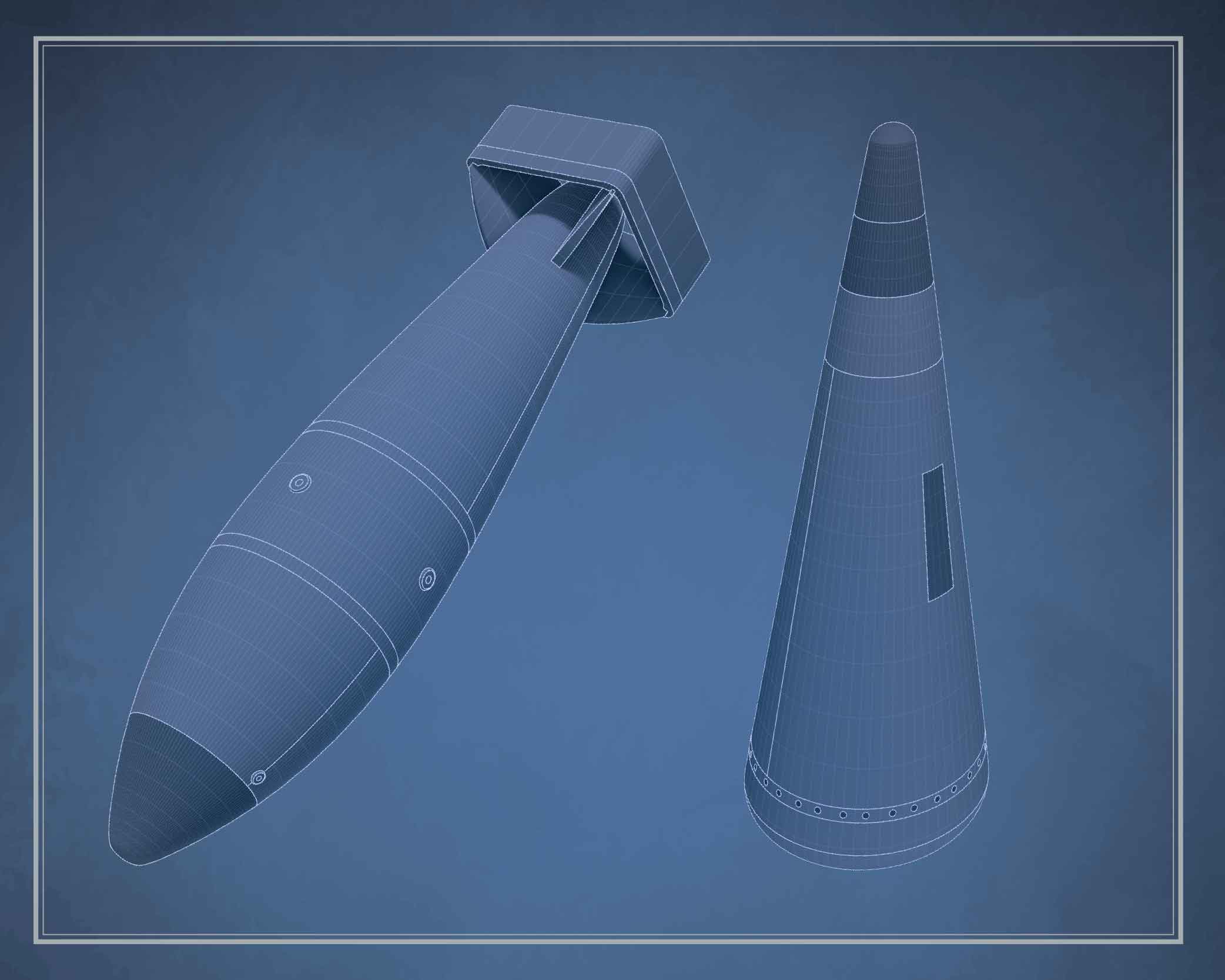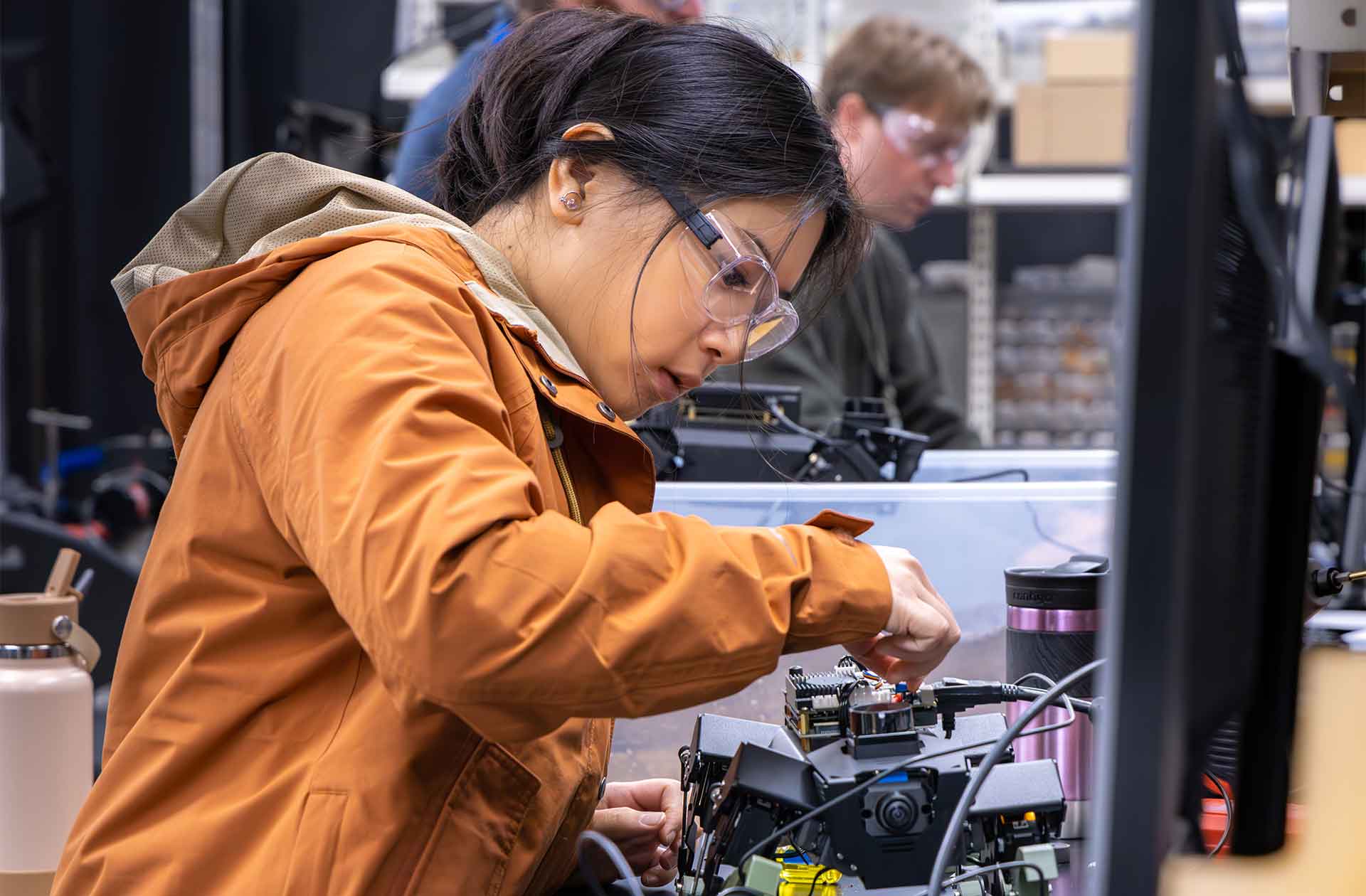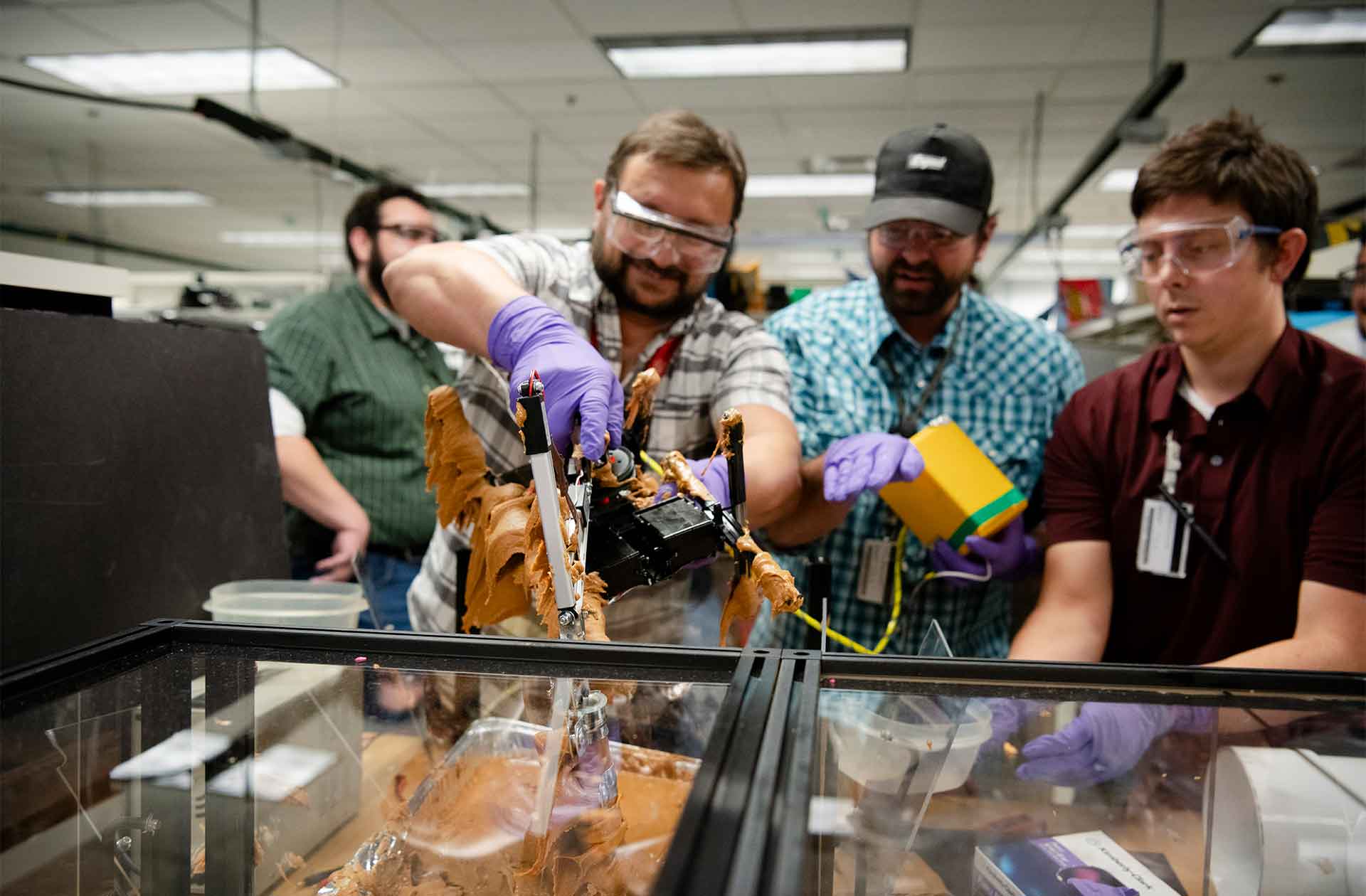Switchable explosives
What if an explosive could be switched on and off like a light?
- Katharine Coggeshall, Writer

Traditional explosives have just one state, which is determined by their outermost electrons. Electrons (little balls of charged energy) arrange themselves in orbitals (regions) around the atoms of an explosive compound. Although the orbitals are finite and unchanging, how the electrons decide to disperse among the orbitals determines the compound’s state and therefore its properties, such as its sensitivity (how likely it is to explode). Most compounds settle on a state that requires the least amount of energy to maintain.
But what if explosives could have two states—an insensitive state (not likely to accidentally explode) and a sensitive state (ready to boom)? By exploiting a property called “spin crossover”—a phenomenon that supports two different electron dispersion states—Lab researchers are honing two-state “switchable” explosives, which are safer to handle because they can essentially be turned on and off.
“Spin crossover has been studied for some time in other materials,” says Jackie Veauthier, deputy group leader of Inorganic Isotope and Actinide Chemistry, “but until now, no one had reported it in an explosive.”
Veauthier, with collaborators from the Lab’s Explosive Science and Shock Physics Division and the Theoretical Division, were the first to realize that [Fe(Htrz)3]n[ClO4]2n, an explosive material, also possesses spin crossover. [Fe(Htrz)3]n[ClO4]2n is not new, but Veauthier and her colleagues only recently discovered its versatility.
Although [Fe(Htrz)3]n[ClO4]2n is providing a framework for what a switchable explosive might look like, the material isn’t the most ideal in terms of switchability. The gap between the less-sensitive and more-sensitive states isn’t as large as the researchers would like. A larger gap would offer more of an on-off control mechanism, one that could be triggered by a specific stimulus, such as a magnetic field or irradiation with light.
“There are definitely other compounds out there that could be switchable explosives,” says Thuy-Ai Nguyen, an Agnew National Security Postdoctoral Fellow in the Lab’s High Explosives Science and Technology group. “New spincrossover materials are being made all the time for applications in electronic devices, and some of those compounds have energy-dense, nitrogen-rich sections that can be optimized to have explosive properties.”
As they tweak these new compounds, researchers will also be testing known explosives for spin-crossover properties. Slowly, they are building a new class of explosives—one that is safer for military personnel, miners, construction workers, and others to use.








